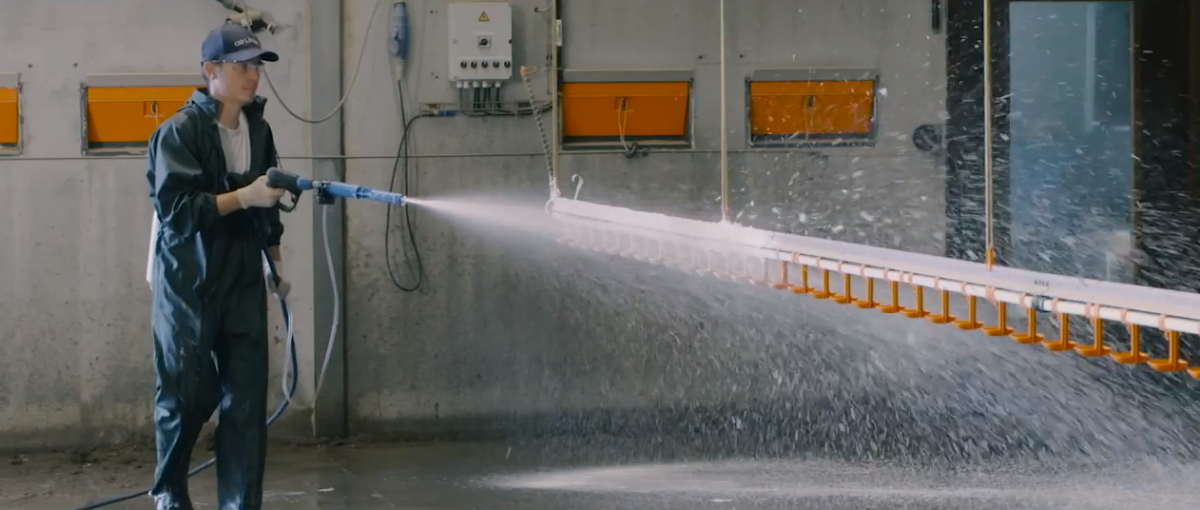Cleaning And Disinfecting Stores And Stored Items

The first step in cleaning an area is to dry clean. Dry cleaning refers to the removal of all dust and dry “dirt” from the area. Where pesticide spills are evident, these need to be correctly cleaned up and removed to designated pesticide waste sites.
Dry-clean and remove all equipment and removable objects. Where possible, one can use compressed air to remove surface dust from all internal structures. All dry residues should be removed and disposed of.
The areas where animal foodstuffs are stored must be cleaned with detergents and followed by microbial control agents. At first, all surfaces should be washed with a suitable detergent. (Remember, detergents must be diluted as per label). Allow extra time for the detergent to dissolve dogged dirt on the surfaces. Apply the detergent with a spray pump at low pressure. (Clean from the inside top of the roof and work downwards).
Adjust the spray pump to a higher pressure and rinse the detergent with clean water, starting from the top working downwards.
Disinfect the whole area after washing. Check all rodent bait stations, and refill with the specified rodenticides as necessary.
Types of Microbial Control Agents
Microbial control agents are divided into major groups. The Definitions are based on how and what the compounds control. The basic Definitions are set out below:
- Antiseptics inhibit or prevent the growth of microbes in living tissue.
- Disinfectants inhibit or prevent the growth of microbes on inanimate objects.
- Sanitisers reduce the number of microbes to a safe level.
- Sterilizers eliminate all microbes.
- Bactericides control bacteria.
- Fungicides control fungi.
- Viricides control virus
- Sporicides control fungal and bacterial spores.
- Biocides kill living organisms.
- Detergents contain free ions and leave a thin film on surfaces.
- Anionic Detergents (soaps) have free negative ions that produce curd when combined with calcium and magnesium in hard water.
- Cationic Detergents Quaternary ammonium contains positively charged ions, which remain suspended in solution.
Disinfectants for the control of micro-organisms are used in the food and drink industry primarily, on farms where produce is processed and in other processing facilities.
Disinfectant suppliers use the material safety data sheet to set out the hazardous properties of their products. The MSDS provides information about the health hazards, physical and disinfectant characteristics, first aid, and how to use the disinfectant safely. Once this information is available, add to this the producer’s warnings, it is the user’s onus to read the information on the label before using a disinfectant. This will ensure that the product is used correctly and also that the proper health precautions are taken.
The section below sets out some properties of commonly used disinfectants. The compounds are classified here according to disinfectant classification. Please note that this is not done to confuse the reader, but rather to ensure that the end-user of these compounds will be able to identify the hazards of the cleaning products they commonly work with.
|
Hypo-chlorites are chlorine disinfectants |
|
|
Iodine Disinfectants (contain Iodine /Iodine-based) |
|
|
Chlorhexidine |
|
|
Alcohols |
|
Oxidizing Agents
|
Oxidizing Agents |
|
|
Phenolic Disinfectants |
|
|
Quaternary Ammonium Compounds |
|
|
Aldehydes |
|